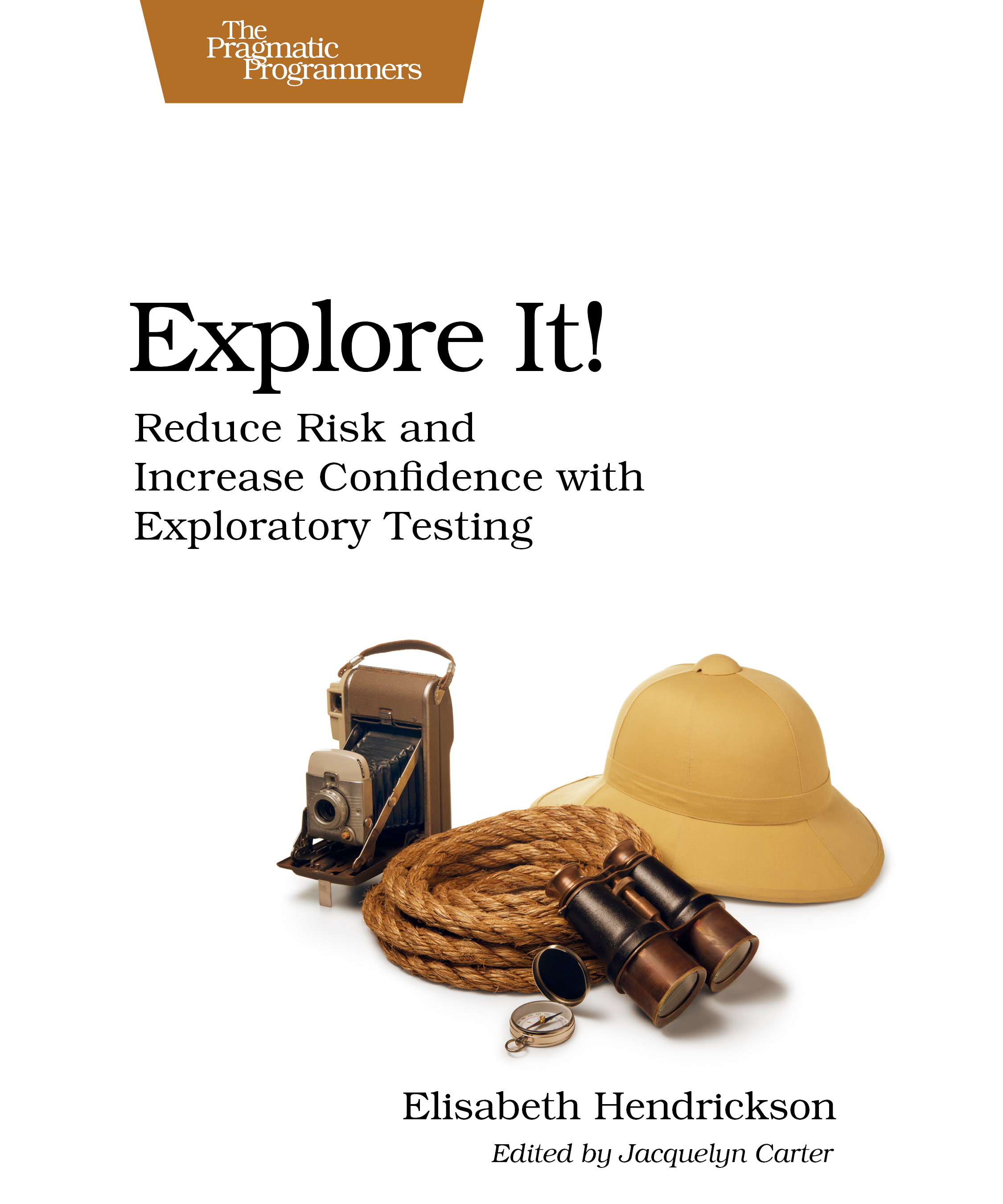Explore It!
Reduce Risk and Increase Confidence with Exploratory Testing
by: Elisabeth Hendrickson
| Published | 2013-02-17 |
|---|---|
| Internal code | ehxta |
| Print status | In Print |
| Pages | 186 |
| User level | Beginner |
| Keywords | exploratory, testing, inputs, outputs, actions, sequences, interactions, timing |
| Related titles | |
| ISBN | 9781937785024 |
| Other ISBN |
Channel epub: 9781680503500 Channel PDF: 9781680503517 Kindle: 9781941222010 Safari: 9781941222584 Kindle: 9781941222010 |
| BISACs | COM051330 COMPUTERS / Software Development & Engineering / Quality Assurance & TestingCOM051000 COMPUTERS / Programming / GeneralCOM051000 COMPUTERS / Programming / General |
Highlight
Uncover surprises, risks, and potentially serious bugs with exploratory testing. Rather than designing all tests in advance, explorers design and execute small, rapid experiments, using what they learned from the last little experiment to inform the next. Learn essential skills of a senior explorer, including how to analyze software to discover key points of vulnerability, how to design experiments on the fly, how to hone your observation skills, and how to focus your efforts.
Description
Software is full of surprises. No matter how careful or skilled you are, when you create software it can behave differently than you intended. Exploratory testing mitigates those risks.
Part 1 introduces the core, essential skills of a master explorer. You’ll learn to craft charters to guide your exploration, to observe what’s really happening (hint: it’s harder than it sounds), to identify interesting variations, and to determine what expected behavior should be when exercising software in unexpected ways.
Part 2 builds on that foundation. You’ll learn how to explore by varying interactions, sequences, data, timing, and configurations. Along the way you’ll see how to incorporate analysis techniques like state modeling, data modeling, and defining context diagrams into your explorer’s arsenal.
Part 3 brings the techniques back into the context of a software project. You’ll apply the skills and techniques in a variety of contexts and integrate exploration into the development cycle from the very beginning.
You can apply the techniques in this book to any kind of software. Whether you work on embedded systems, Web applications, desktop applications, APIs, or something else, you’ll find this book contains a wealth of concrete and practical advice about exploring your software to discover its capabilities, limitations, and risks.
Contents and Extracts
- Establishing Foundations
- On Testing and Exploration
- Charter Your Explorations excerpt
- Observe the Details
- Find Interesting Variations
- Evaluate Results
- Adding Dimensions
- Vary Sequences and Interactions
- Explore Entities and their Relationships
- Discover States and Transitions excerpt
- Explore the Ecosystem
- Putting it in Context
- Exploring When There is No User Interface excerpt
- Exploring an Existing System
- Explore Requirements
- Integrate Exploration Throughout
- Appendices
- Interviewing for Exploratory Testing Skills
- Test Heuristics Cheat Sheet
